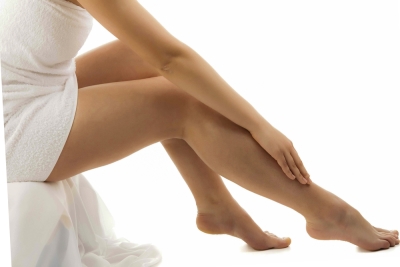Varicose Vein Treatment
Less Pain From Minimally-Invasive Treatments
What Are Varicose Veins?
 Although any vein may become varicose, the ones most commonly affected
are located in the legs and feet. For many, varicose veins and spider
veins are a cosmetic issue. For others, they can trigger problems such
as itching, pain, swelling, blood clots, or other circulatory system disorders.
Although any vein may become varicose, the ones most commonly affected
are located in the legs and feet. For many, varicose veins and spider
veins are a cosmetic issue. For others, they can trigger problems such
as itching, pain, swelling, blood clots, or other circulatory system disorders.
BCH’s board-certified interventional radiologists—Boulder County’s
most experienced team of leg vein specialists—offer special expertise
in vascular diseases that allows them to evaluate all potential causes
of vein problems. Compared to traditional surgical procedures, our minimally
invasive varicose-vein treatment procedures offer patients:
- lower infection rates
- less pain
- minimal scarring
- shorter recovery times
When Are Varicose Vein Treatments Recommended?
When varicose veins become painful or otherwise interfere with quality
of life, it’s a good idea to talk with your doctor about treatment
options. Painful symptoms of varicose veins may include:
- An achy or heavy feeling in your legs
- Itching around one or more of your veins
- Burning, throbbing, muscle cramping and swelling in your lower legs
- Pain that worsens after sitting or standing for a long time
- Skin ulcers near your ankle
- Spider veins are smaller veins found closer to the skin's surface and can
be red or blue. They generally occur on the legs or face.
What to Expect During a Varicose Vein Procedure
BCH’s minimally invasive, interventional radiology procedures require
only a local anesthetic and injections require no anesthetic. These highly
effective procedures are less painful than vein ligation and stripping
and offer a shorter recovery time. You can walk immediately after procedures.
Any incisions made are tiny and scarring is minimal. You may need to wear
compression stockings for a week or more. Find more details on specific
varicose vein treatment below.
Schedule a Varicose Vein Consultation
Treatment for varicose veins is provided at Foothills Hospital. For a varicose
vein consultation, please schedule a pre-ablation ultrasound by calling
303-415-7544. For more information on interventional radiology, call
303-415-7249.
Imaging at Foothills Hospital (Boulder)
Paying for Services
BCH accepts most major insurance plans. Explore
Self-Pay pricing options if you are uninsured or wish to pay directly for any service.
Questions About Your Bill?
For Billing and Payment information, click
here.
Endovenous Thermal Ablation
How it works: Endovenous thermal ablation is a minimally invasive, nonsurgical new technology
that allows physicians to direct laser or radiofrequency energy through
a thin tube called a catheter to seal shut the varicose vein. Patients
are given a local, rather than general, anesthetic.
Benefits: Recovery is quick with minimal discomfort. Other benefits: no scars, minimal
risk of infection, high success rate, minimal recurrence rate, excellent
long-term effectiveness, and reduced risk of complications. Because this
procedure closes targeted veins but leaves them in place, there is less
bleeding, bruising, and pain and a faster return to normal activity.
Recovery: A typical thermal ablation (outpatient) procedure takes just 45 minutes.
You can walk immediately afterwards. The small incision can be covered
with a Band-Aid. Any post-procedural pain is usually relieved with ibuprofen
or acetaminophen. A graduated compression stocking must be worn for at
least two weeks. Walking is strongly encouraged as part of the recovery
regimen. A small minority of patients may have residual varicose veins
that require additional treatment with ambulatory phlebectomy or sclerotherapy.
Sclerotherapy
How it works: Your doctor injects a chemical solution into small- or medium-sized varicose
veins. The solution shrinks those veins until they close. Your leg is
then compressed with either stockings or bandages that must be worn for
one week after treatment. In a few weeks, the treated veins dissolve and
disappear as the body naturally absorbs them. Patients sometimes need
two or more treatments - separated by several weeks - to significantly
improve the appearance of their leg veins.
Benefits: While the same vein may need to be injected more than once, sclerotherapy
is generally quite effective and doesn't require anesthesia. Sclerotherapy
is preferred over laser or radiofrequency therapy for eliminating larger
spider veins, smaller varicose leg veins, and veins that are too twisted
for insertion of a thermal ablation catheter. Unlike ablation, the chemical
solution used in this approach also closes the "feeder veins"
under the skin that are causing the spider veins to form, thereby making
a recurrence of spider veins in the treated area less likely.
Ambulatory Phlebectomy
How it works: Ambulatory phlebectomy is a micro-extraction procedure that removes large
varicose veins near the skin’s surface through tiny skin punctures
that require no stitches. Removal of these veins is often necessary to
prevent the varicosity from reoccurring.
Benefits: Unlike traditional vein stripping, the incisions are small and bruising
is minimal. The radiologist will make micro-incisions (2-3 millimeters)
in your leg then use a special instrument to easily extract even large
varicose veins. Scarring is generally minimal.
Recovery: You can walk immediately following the procedure. Intravenous sedation
(fentanyl and versed) is used during this procedure. Patients return the
following day for a dressing change, and a compression stocking is applied
for the following week.

 Although any vein may become varicose, the ones most commonly affected
are located in the legs and feet. For many, varicose veins and spider
veins are a cosmetic issue. For others, they can trigger problems such
as itching, pain, swelling, blood clots, or other circulatory system disorders.
Although any vein may become varicose, the ones most commonly affected
are located in the legs and feet. For many, varicose veins and spider
veins are a cosmetic issue. For others, they can trigger problems such
as itching, pain, swelling, blood clots, or other circulatory system disorders.